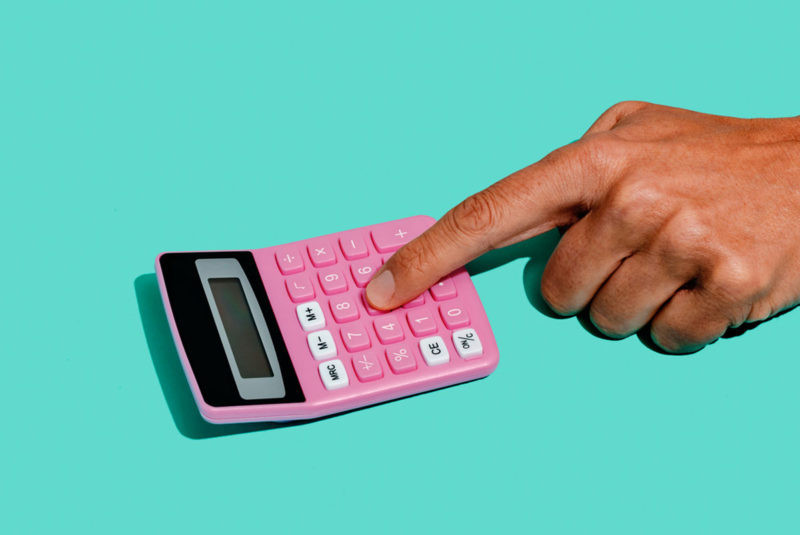When you take out a traditional installment loan, the lender decides upfront how much money it will loan you. You then pay the loan back, generally at a fixed rate over a fixed period of time.
Credit cards, on the other hand, work very differently. With a credit card account you can borrow money, pay down your balance, and borrow again. Rinse and repeat the process as often as you like, provided your account remains open and in good standing.
Of course, while credit cards offer you the ability to borrow with flexibility, certain restrictions will apply to your account. One such restriction which you should be familiar with is known as your credit limit.
Credit Limit Definition
The simplest way to define credit limit is this: A credit limit is the maximum amount of money which a lender or credit card issuer will allow you to borrow on your account.
When you use a credit card for a purchase, you tap into a portion of your credit limit (sometimes called your credit line). Your account balance increases while, at the same time, your available credit decreases.
If you charge up to the maximum amount of credit you’re allowed to borrow (aka your credit limit), you typically must make a payment before your card issuer will allow you to use the card for additional purchases.
Here’s an example how the process works:
- Credit limit on account: $5,000
- Total monthly charges: $5,000
- Updated available credit: $0
- Credit card payment: $2,500
- Updated available credit for new charges: $2,500
So, in this example, you have a credit line of $5,000, and you use the whole thing up by making purchases. Then you make a payment for half the balance, which leaves you with half of your total credit limit available for new purchases.
Ideally, you should pay off your credit card balances in full every month (if you’re not already doing so). Following this rule of thumb should help to ensure that you always have your full credit limit available for new charges in the upcoming month.
Types of accounts that have credit limits
You probably think of credit limits as being associated with your credit card accounts. However, other revolving lines of credit commonly feature maximum credit limits as well, such as:
- Retail credit cards (gas cards, department store cards, etc.)
- Home equity lines of credit (HELOCs)
- Business lines of credit
It’s worth noting that credit cards and retail store cards will typically be factored into your revolving utilization ratio. A HELOC or business line of credit, on the other hand, generally isn’t considered by scoring models in revolving utilization measurement.
Translation: High utilization of credit limits on HELOCs and business lines of credit will likely have little impact upon your credit scores.
Types of credit card credit limits
When it comes to credit cards specifically, your account may have different maximum borrowing thresholds for different types of activity. For example, if your overall credit limit is $22,000, you might see the following restrictions on your account:
- Purchase credit limit: $22,000
- Balance transfer credit limit: $22,000 (minus balance transfer fees)
- Cash advance credit limit: $8,800
Your cash advance limit is usually less than your overall credit limit. However, this doesn’t represent an additional amount of money you can borrow on most credit card accounts.
You can’t, for example, max out the $22,000 credit limit above on purchases plus access another $8,800 through a cash advance. Your overall credit limit is reduced whether you make a purchase, request a balance transfer, or use the cash advance feature on your account. It all comes out of the same pot.
How Are Credit Limits Determined?
According to Experian™, the average limit on credit cards in the last quarter of 2018 was $20,265. Of course, that’s no guarantee of what credit limit you will be issued if you decide to apply for a new card. Every lender has its own, individual criteria it uses to determine how much credit to extend to customers.
The exact method a lender uses to set credit limits is proprietary. So, you won’t be able to get a lender to spill all of its secrets when it comes to how your credit limit is determined.
Here’s a list of some of the factors which are likely to be considered when your credit limit is set:
- Credit scores
- Length of credit history
- Income
- Existing debt obligations
- Overall national economy
So, although your credit limits are determined in large part by your own behavior, external forces like the national economy can play a role as well.
If you have good credit, you’re more likely to qualify for a new credit card with a higher limit (and lower interest rates). If you have bad credit or fair credit, the odds of scoring a high limit may not be in your favor.
Why Your Credit Limit Matters
In addition to dictating how much you’re allowed to charge on an account, your credit card limit matters because of the influence it can have upon your credit scores. As mentioned above, your revolving utilization ratio is a factor, which impacts your credit scores.
It’s not a small factor, either: 30% of your FICO® credit scores are largely (though not entirely) based upon revolving utilization.
When you have lower credit limits, it’s easier to over-utilize your credit card accounts. If your credit reports show a higher percentage of utilization, it can drive your credit scores downward.
Want to earn and keep good credit scores? Maintaining a low revolving utilization ratio is crucial to your success.
In general, the lower your revolving utilization, the better it is for your credit scores (with one exception).
Check out the following two examples of credit card usage to understand how a low credit limit can be a disadvantage where your credit scores are concerned.
Example 1
| Credit Limit | Account Balance | Credit Utilization |
| $500 | $500 | 100% |
Example 2
| Credit Limit | Account Balance | Credit Utilization |
| $5,000 | $500 | 10% |
As you can see, the only figure which changed between example 1 and example 2 was the credit limit. The low limit in the first table resulted in a maxed-out account. Meanwhile, the high-limit credit card in the second table resulted in a much lower revolving utilization ratio.
If you use the Free Credit Score Estimator from myFICO®, the person in example 1 might have a credit score of 615 – 665 (depending upon the factors you select for the rest of the credit report). However, the person in example 2 would have an estimated credit score of 710 – 760 (picking the same factors as before).
That’s a 95-point increase, resulting from nothing other than a higher credit limit on a credit card.
Of course, this is merely an example. Bringing your credit utilization down from 100% – 10% with a high credit limit doesn’t guarantee that you’ll see the same results. Every credit report is different, almost like a fingerprint.
Nonetheless, this hypothetical example should show you just how powerful your credit limit can be when it comes to your scores. It’s also a strong argument in favor of requesting credit limit increases on your lower limit cards, if you believe you can qualify.
What Happens if You Go Over Your Credit Limit?
From the previous example, you can probably already guess that going over your credit limit isn’t a good move. When you exceed your credit limit your revolving utilization ratio will climb to over 100%.
Often your credit card company will simply deny your transaction if you attempt to charge more than the available credit limit on your account. Yet that isn’t always true. Although it’s never wise to go over your credit limit, it is possible in certain circumstances.
- Your card issuer might allow you to exceed your credit limit if you opt-in to receive over-limit coverage. By opting in, you agree to pay a fee if your card issuer covers an over-the-limit charge on your behalf. (Note: Prior to the CARD Act of 2009, over-the-limit fees could be charged without your permission.)
- You could exceed your credit limit if you’re close to your limit and several pending transactions hit your account at once. The transactions might post for higher amounts than your card issuer initially authorized. For example, a gas station might authorize a charge for $1, but your final purchase comes through at a higher amount.
Whether your credit card company allows you to exceed your credit limit or not, it’s something you definitely want to avoid. When you go over your credit limit, you could set off a chain reaction of negative consequences.
- Your card issuer might add an over-the-limit fee to your account (if you opted-in to receive over-the-limit coverage).
- Your card issuer may decrease your credit limit.
- The interest rate on your account could be increased.
- Your card issuer could close your account altogether if you habitually go over your credit limit.
- Having a balance that is higher than your credit limit could impact your credit scores negatively.
- Other card issuers might see your over-the-limit status when your credit is checked for monthly account maintenance. Those card issuers might close or change the terms on your other unrelated credit card accounts as a result of your higher credit risk.
Final Thoughts
Understanding how credit limits work and how they can impact your credit scores is an important part of being a smart credit card user.
Do you know how high your credit limits are? Do you manage your balances to avoid maxing out your credit cards?
The more knowledge you have about how credit cards operate, the more prepared you will be to make sure the little pieces of plastic in your wallet are working for you, not against you.
The Short Version
- With a credit card account, you can borrow money, pay down your balance, and borrow again
- A credit limit is the maximum amount of money a lender or credit card issuer will allow you to borrow on your account
- Every lender has individual criteria they use to determine how much credit to extend to customers




